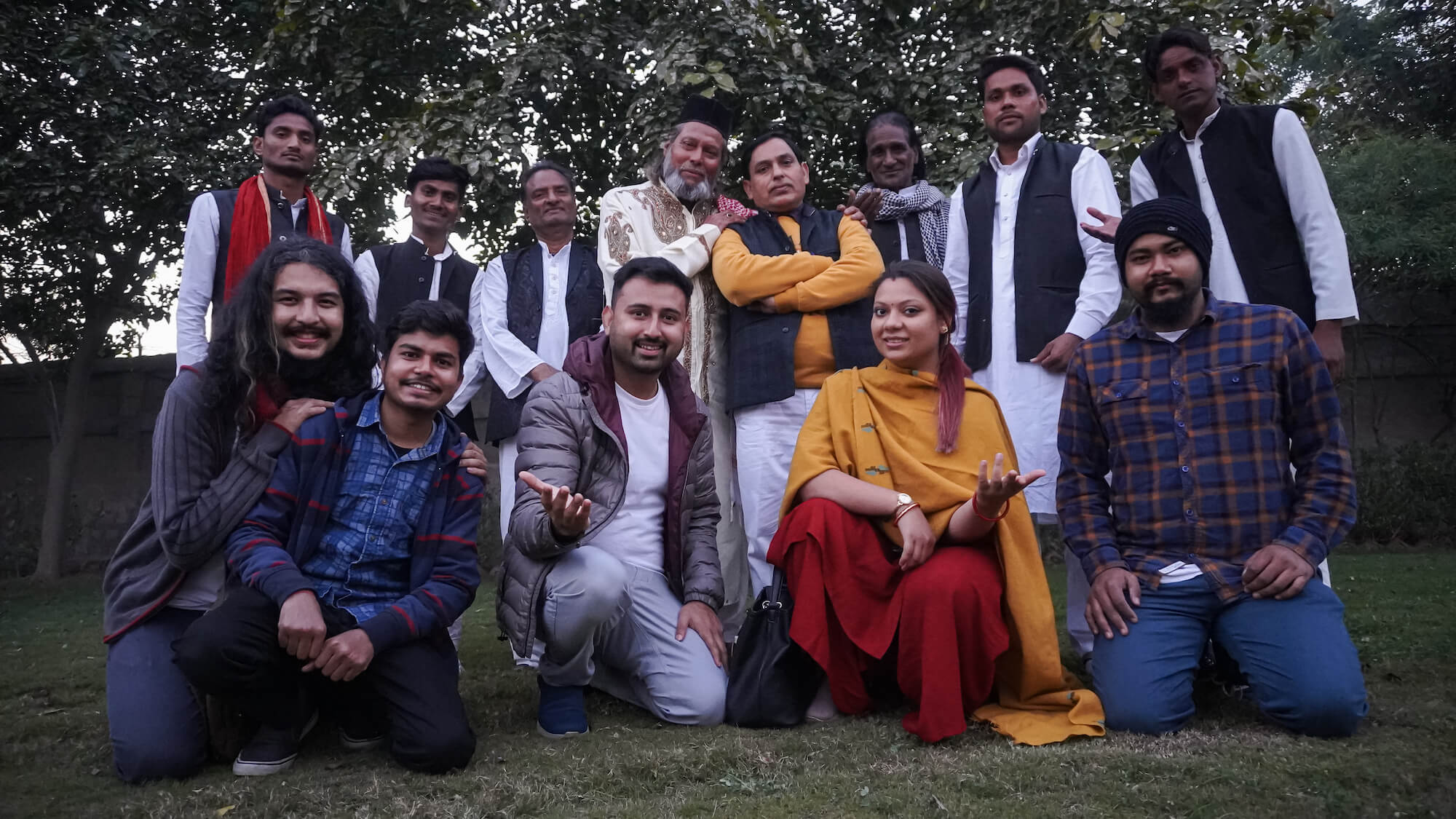
TRACING QAWWALI WITH THE CHIEF QAWWAL OF SALIM CHISTI DARGAH
Braj is not just the land where the love of Radha and Krishna blossomed but is also the place where the Mughal Emperors reached their cultural and architectural pinnacle. Sufi saints like Salim Chishti and Amir Khusrow emoted their divinity through Sufi Kalams. To experience such a performance by Azeez Chishti Ji, who also happens to be the Chief Qawwal of Salim Chishti Dargah, we headed to Fatehpur Sikri. Fatehpur Sikri has a rich cultural and historical heritage. It happened to be the capital of the Mughals during the reign of Akbar. The majestic grandeur of the city can be felt even today. Due to time constraints, we could only visit Buland Darwaza. Heading towards the main gate and walking up forty-two steps, we could feel the strong vibrations of the Azan around us, and with the sun rays of the golden hour falling on the red and buff sandstone gateway was a breathtaking experience.
Being in a trance-like state with this visual, we saw the inscription on Buland Darwaza reading,’ The World is a Bridge, pass over it, but build no houses upon it. He who hopes for a day may hope for eternity, but the world endures but an hour. Spend it in prayer, for the rest is unseen.’ Buland Darwaza is the highest gateway in the world and is the epitome of Mughal architectural mastery. The moment we entered, a flock of pigeons flew over us, with a few kids rushing in our direction to smite us with their sweet charm and poetry.
The sky that day was clear, and the reflection of Salim Chishti’s Mazar, which is another marvel of Mughal architecture, on the reflecting pool was something from which you just can’t take your eyes off. With all this awe and amazement, we suddenly saw a person in his 60s moving his fingers effortlessly across the keys of the harmonium and singing in his full-throated mellifluous voice, belting out one of the Kalams of Amir Khusrow just in front of the Dargah. We instantly understood this was Azeez Chishti. He holds the experiences from singing with his father Noor Mohammad Qawaal, who happens to be his Guru. His journey has been remarkable, from singing for All India Radio to becoming the Chief Qawwal of the Dargah.
As a conversation evolved around him, we discovered that their family has been performing at the service of Hazrat Salim Chishti Dargah for generations. Azeez Ji himself has been with the shrine for the last 50 years. Azeez Chishti’s forefathers have been part of Akbar’s court and used to get a salary from the royal treasury. The whole Dargah experience was quite captivating, where we got a chance to spend some time with our spiritual self in the true sense. To film Azeez Ji and his group, we chose the campus of a college named MBD Intercollege in the village Dura in the district of Agra, surrounded by dense green fields.
There, with his qawwali team, he gave an exuberant performance. They performed Nat sharif,” Na ming hanam che majhol”, a Kalam by the great Sufi Saint Amir Khusrow, and it was followed by “Kahun Kaise Sakhi”, a beautiful song of divine love.
“Kahun kaise sakhi, mohe laaj lage,
(What to tell you, my friend, I feel very shy)
Mohe piya ki nazariya maar gayi,
(My beloved has made me fall in love with his eyes)
Maine laaj ka ghoonghat khol diyo”
(Keeping my shyness aside I have confessed my love in him)
Due to a lack of financial growth in the musical field, these artists have to look for other jobs to earn a livelihood for their families. Currently, at the age of 60, Mohammad Azeez Chishti, despite being an amazingly talented artist who has done so much for generations, had to struggle for financial assistance. He is a severe diabetic patient and had to take Insulin to keep his sugar levels in control. When asked, he was unwilling to teach his coming generations the art of qawwali as he fears that the future ahead is very grim and unpredictable.
